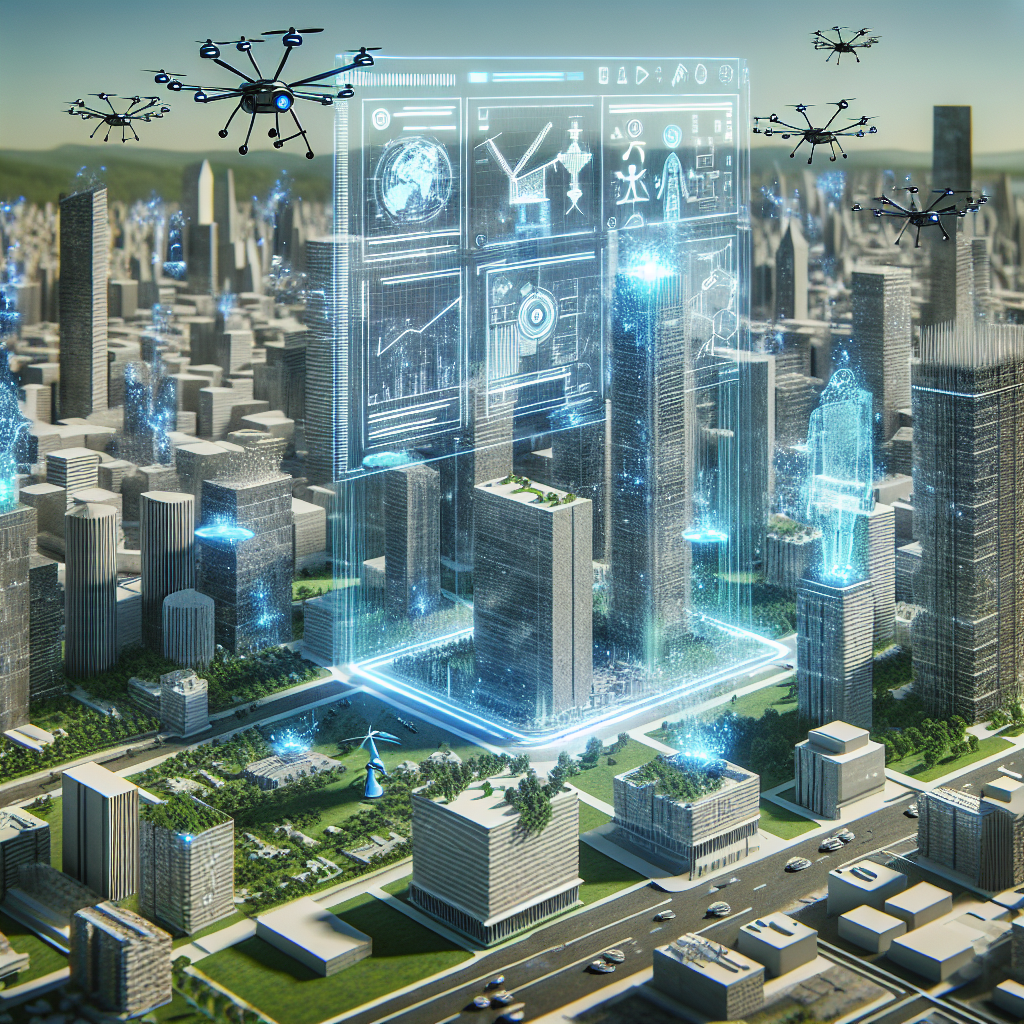Artificial Intelligence (AI) has already made significant advancements in various fields, from healthcare to finance to transportation. Now, urban design is also beginning to harness the power of AI to create smarter, more efficient cities. The future of AI in urban design holds great potential to revolutionize the way we plan and build our cities, making them more sustainable, livable, and responsive to the needs of their residents.
One of the key areas where AI is already making an impact in urban design is in the planning and development of smart cities. Smart cities are cities that leverage technology to optimize infrastructure, services, and resources in order to improve the quality of life for their residents. AI plays a crucial role in smart city planning by analyzing data from sensors, cameras, and other sources to identify patterns and trends that can inform decision-making. For example, AI can analyze traffic flow data to optimize transportation routes, or analyze energy usage data to identify opportunities for energy efficiency improvements.
Another area where AI is being used in urban design is in the creation of more sustainable buildings and infrastructure. AI can help architects and engineers design buildings that are more energy-efficient, environmentally friendly, and responsive to the needs of their occupants. For example, AI can analyze data on building usage patterns to optimize heating and cooling systems, or analyze weather data to design buildings that are better able to withstand extreme weather events.
AI can also play a role in creating more inclusive and accessible cities. By analyzing data on demographics, mobility patterns, and accessibility needs, AI can help urban planners design cities that are more accessible to people of all ages and abilities. For example, AI can analyze data on public transportation usage to identify areas where accessibility improvements are needed, or analyze data on pedestrian traffic to design safer and more inclusive streetscapes.
Overall, the future of AI in urban design holds great promise for creating cities that are smarter, more sustainable, and more responsive to the needs of their residents. However, there are also challenges and ethical considerations that must be taken into account as AI becomes more integrated into urban planning and design.
One challenge is ensuring that AI is used in a way that is transparent, accountable, and fair. As AI algorithms become more sophisticated, there is a risk that they may unintentionally perpetuate biases or discriminate against certain groups of people. For example, if AI algorithms are used to determine where new transportation infrastructure should be built, there is a risk that they may favor wealthier neighborhoods over poorer ones. It is essential that urban planners and designers carefully consider the ethical implications of using AI in their work, and take steps to ensure that AI is used in a way that promotes equity and social justice.
Another challenge is ensuring that AI is used in a way that respects privacy and data security. As AI algorithms analyze vast amounts of data from sensors, cameras, and other sources, there is a risk that personal information may be collected and used without consent. It is crucial that urban planners and designers implement robust data protection measures to safeguard the privacy and security of their residents.
Despite these challenges, the future of AI in urban design holds great potential to transform the way we plan and build our cities. By harnessing the power of AI to analyze data, optimize infrastructure, and create more sustainable and inclusive cities, we can create urban environments that are more livable, resilient, and responsive to the needs of their residents.
FAQs:
1. What are some examples of how AI is being used in urban design?
– AI is being used in smart city planning to analyze data and optimize infrastructure.
– AI is being used in building design to create more sustainable and energy-efficient buildings.
– AI is being used in inclusive design to create cities that are accessible to people of all ages and abilities.
2. What are some of the challenges of using AI in urban design?
– Ensuring that AI is used in a transparent, accountable, and fair manner.
– Safeguarding privacy and data security.
– Addressing ethical considerations and potential biases in AI algorithms.
3. How can urban planners and designers ensure that AI is used ethically in urban design?
– By carefully considering the ethical implications of using AI in their work.
– By implementing robust data protection measures to safeguard privacy and security.
– By ensuring that AI is used in a way that promotes equity and social justice.
4. What are some potential benefits of using AI in urban design?
– Creating smarter, more sustainable cities.
– Optimizing infrastructure and services to improve quality of life for residents.
– Creating more inclusive and accessible cities for people of all ages and abilities.
In conclusion, the future of AI in urban design holds great promise for creating cities that are smarter, more sustainable, and more responsive to the needs of their residents. By addressing the challenges and ethical considerations of using AI in urban planning and design, we can harness the power of AI to create urban environments that are more livable, resilient, and inclusive. As AI continues to advance, it will be exciting to see how it shapes the future of our cities and improves the quality of life for all residents.

